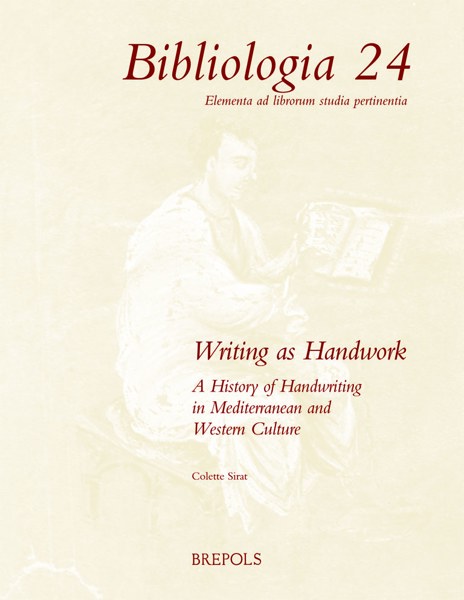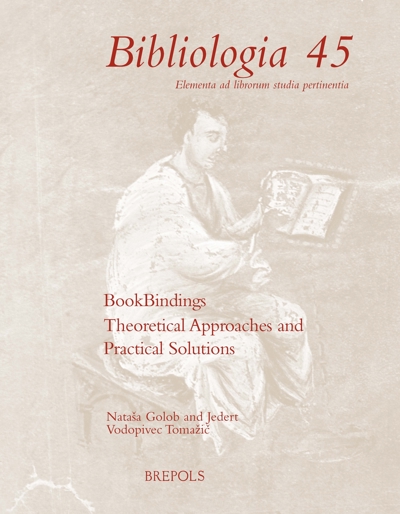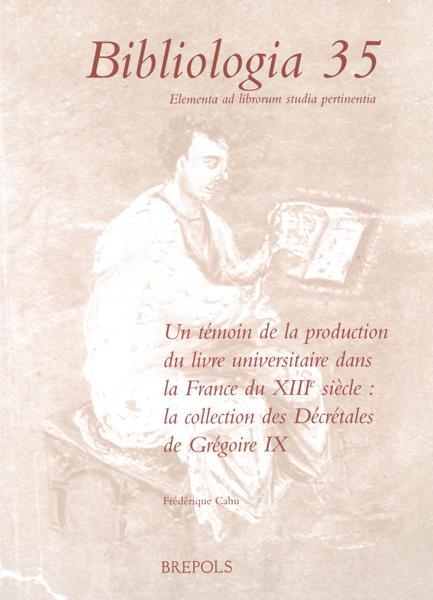
- Pages: 575 p.
- Size:210 x 270 mm
- Illustrations:308 b/w
- Language(s):English
- Publication Year:2006
- € 75,00 EXCL. VAT RETAIL PRICE
- ISBN: 978-2-503-52116-9
- Paperback
- Out of Print
"Most research on writing has been from the standpoint either of the system (alphabet, language etc) or the reader. Very little has examined the history of writing from the viewpoint of the producer of the handwritten script. …. This book examines Homo sapiens as a writer, without separating different kinds of scripts and documents in a particular era, and focuses on the physical aspects of scripts. …..
There are five dimensions to this wide-ranging study: writing schools, where the art is acquired; the design of manuscripts; the different kinds of scripts used by writers; the postures assumed during writing and the movements it involves; and the personal characteristics of handwriting. ……
The panoramic opening chapter gave me the sense (sustained throughout my reading of subsequent chapters) that I was in the presence of a scholar for whom this book represented the summary of a lifetime of research, accumulated knowledge, and reflection. Her erudition is worn lightly. She has an easy ability to encompass a huge amount of material; and scholarly citation and excerpts from the work of other writers are smoothly incorporated into the flow of narrative. She has a gift for the telling use of (often fascinating) brief anecdotes and asides; and she has a lucid, friendly style. …..
In summary, I have enjoyed being in the company of a great scholar for such a mind-expanding journey through a central aspect of human history and a key driver to the evolution of human consciousness. There are certain things I will not look at in the same way again!"
Raymond Tallis
Author of The Hand. A Philosophical Inquiry into Human Being
L'homme a commencé à écrire il y a six mille ans. Depuis, presque tout a changé sauf le corps humain, son cerveau et sa main. Les mécanismes de l'écriture sont aussi restés les mêmes: les mouvements du corps et de la main se conforment aux caractères du matériel et de l'instrument d'écriture, mais aussi aux conventions culturelles. L'écriture à la main n'a jamais été plus répandue: malgré l'imprimerie (depuis ca 1450) et la production toujours grandissante de caractères imprimés électroniquement, les enfants du monde entier ou presque apprennent à écrire manuellement et les adultes- s'ils utilisent plutôt un clavier- continuent cependant à signer à la main. Afin de suivre 'Homo scribens' au long des siècles, le livre nous invite à dépasser les frontières des langues et des systèmes d'écriture (cunéiforme et égyptien, hébreu et araméen, grec et latin, arabe) pour aborder l'histoire des écoles, des matériaux de l'écriture et de ses instruments, et aussi celle de la mise en page des inscriptions sur pierre, des lettres, des documents et des livres. Tout autour du bassin méditerranéen, en Europe et jusqu'en Amérique, ces caractères qui accompagnent l'écriture se sont transmis de culture à culture, malgré les guerres et les massacres, les conquêtes et les révoltes, l'adoption de langages différents et de religions nouvelles, d'autres systèmes d'écriture, Lorsqu'on les étudie de manière globale, les écritures se classent en familles: celle des traits droits, celle des courbes, celle qui est devenue propre à un individu. Ces familles se rencontrent dans presque tous les systèmes d'écriture étudiés ici. L'étude des positions du corps et des mouvements de la main est intimement liée aux familles d'écriture: chacune d'entre elles demande des mouvements différents. Dans chacune des écritures, un texte manuscrit est unique parce qu'il est la trace du mouvement d'une main humaine et que ce mouvement est unique. Chaque manuscrit est lui aussi unique comme l'est une œuvre d'art: on peut reconnaître la main qui a tracé un manuscrit et cependant deux manuscrits de la même main différent car le mouvement ne se reproduit jamais à l'identique. La dernière partie du livre est consacrée aux aspects de l'écriture liés à la personnalité du scripteur. La manière dont les scribes parlent de leur activité- professionnelle ou occasionnelle - nous permet de comprendre ce que l'écriture représentait pour eux. Avec la Renaissance, de plus en plus d'écrivains copient eux-mêmes leurs œuvres, ajoutant à la perfection de leurs textes la perfection de leur main; les autographes étaient à la mode et on pensait qu'ils révélaient la personnalité du scripteur. Mais qu'en est-il des faux? Le faussaire est né avec l'écriture. Peut-on toujours identifier la main qui a écrit une page? Peut-on vraiment juger du caractère d'une personne en observant son écriture? Illustré de 253 figures et de 58 planches, ce livre fait parcourir toute l'histoire des manuscrits et de leurs scribes dans les cultures occidentales.
Introduction
Chapter 1 The Corpus Involved
Part I Schools, Writing Masters, Scribes, and Calligraphers
Chapter 2 Schools for Scribes
Chapter 3 The Spread of the Alphabet: Writing without Schooling
Chapter 4 Greco-Roman Schools: Schools for Citizens
Chapter 5 Schools for Believers: Christianity, Judaism, and Islam
Chapter 6 Christian Schools in Medieval Europe
Chapter 7 Renaissance and Modern Schools
Chapter 8 The Nineteenth and Twentieth Centuries
Chapter 9 Writing Exercises
Part II The Design of Manuscripts
Chapter 10 Design, Layout, and Style
Chapter 11 Written Objects: Their Material, Size, Weight, and Shape
Chapter 12 Layouts for Listing, Recording, Summarizing
Chapter 13 Layouts for Short Texts: Letters and Documents
Chapter 14 Layouts for Long Texts: Books
Part III Scripts
Chapter 15 Styles of Writing
Chapter 16 The "Stroke" Formal Family
Chapter 17 The "Line" Formal Family
Chapter 18 Informal and Personal Handwriting
Part IV Postures and Movements
Chapter 19 Hand and Script
Chapter 20 From Incising to Imprinting
Chapter 21 Writing in Ink: The Egyptian Way
Chapter 22 The Alphabet at the Crossroads of the Two Ancient Writing Cultures
Chapter 23 From Antiquity to the Middle Ages
Chapter 24 From Writing Boards to Desks and Tables
Chapter 25 Writing Postures Today
Part V Whose Hand Is It?
Chapter 26 Controlled and Personal Writing
Chapter 27 Whose Hand Wrote Letters and Documents? Who Signed Them?
Chapter 28 Books and Scribal Colophons
Chapter 29 Authors' Autographs
Chapter 30 Identifying Handwriters and Describing their Character
Conclusion
Appendix A: A Brief Sketch of the Writings Mentioned
Appendix B: An Overview of Paleographies
Appendix C: Why Handwriting is Right-Handed (by W. C. Watt)




